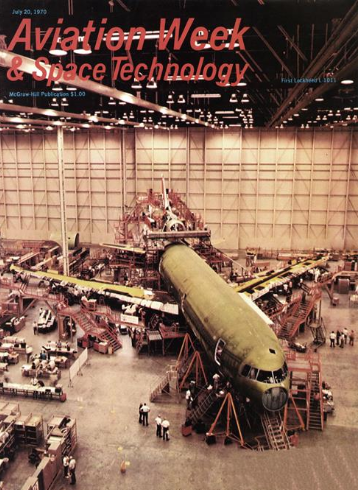From The Archives: Why Lockheed Exited The Passenger Aircraft Market

A technical marvel but a financial albatross, Lockheed's first L-1011 "TriStar" widebody passenger jet was pictured on our July 20, 1970 cover, nearing completion on the company assembly line in Palmdale, California.
Conceived to transport 250 passengers on transcontinental routes, the L-1011 was packed with advanced avionics and systems including direct lift control and an early form of fly-by-wire primary flight control system.
It was also the first large commercial airliner capable of completing an automatic flight from takeoff to landing, as well as the first widebody to be certificated for Category 3B autoland operations.
The three-engine, three-crew jet set a new standard in passenger comfort, with extra-wide aisles and storage bins, glare resistant windows, a below-deck galley and an engine configuration that reduced cabin noise.
But difficulties developing the L-1011's RB211 engine sent Rolls-Royce tumbling into bankruptcy in early 1971, forcing the British government to nationalize the company and the U.S. to put up loan guarantees to enable the project to be completed.
The first L-1011 was finally delivered to Eastern Airlines in April 1972, just as a spike in oil prices triggered a recession and weakened demand for new aircraft. Lockheed ultimately produced 250 L-1011s and sustained $2.5 billion in losses on the program before shutting the line down and exiting the passenger aircraft business in 1983.
Read the feature Advanced Methods Used In L-1011 on page 40 of the issue.
Enjoy unlimited access to the complete Aviation Week Archive which has over 100 Years of Aviation Week — at your fingertips.
Every issue, every page, every article we have ever published. Your subscription includes full access to the archives, plus current Aviation Week & Space Technology articles (both digital and print packages available).




